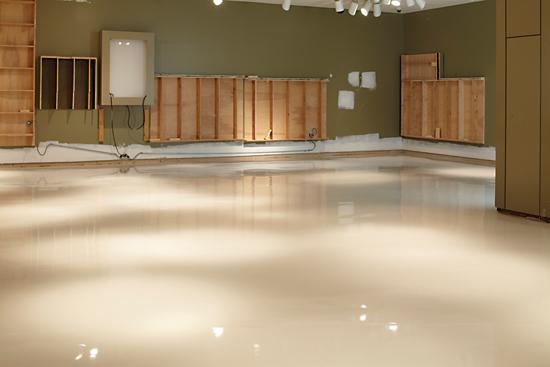Case Study: The Art Institute of Chicago-Jul 2013
By Jessica Chevalier
When an art museum undertakes a renovation, as the Art Institute of Chicago did when it chose to replace the flooring on one level of its wing for American art, stringent care must be taken to protect the artwork in the active portions of the museum.
The Art Institute of Chicago is a world-class museum that hosts 1.5 million visitors annually to view its culturally significant works, among them such icons as Grant Wood’s American Gothic, paintings by Georgia O’Keeffe, Edward Hopper’s Nighthawks and Frank Lloyd Wright-designed furniture.
The museum is housed in a building erected in 1893. The section in need of renovation was the lower level of an addition to the building devoted to American art and completed in 1988. Over the past 25 years, the gallery was finished with a number of floorcoverings, but, prior to renovation, it was carpeted with ten-year-old roll goods, though all the galleries around it had hardwood floors. With funding provided as part of the public museum capital grants program from the Illinois
Department of Natura
l Resources/Illinois State Museum, the Art Institute was eager to address the inconsistency of the flooring.
To bring this 12,000 square foot gallery in line with its surroundings, the museum determined that it would remove the carpet and install a herringbone patterned hardwood floor. In late 2012, the museum began a bidding process for the work. Mr. David’s Flooring International, Ltd., a large commercial flooring contractor (and Starnet member) based in Itasca, Illinois, won the bid.
Because it had worked in the museum a number of times previously, Mr. David’s was familiar with the requirements for operation in the active museum, including protocols on how to get in and out of the work area and how to carry tools to and from the space. Mr. David’s took great care to contain the gallery with plastic sheeting to minimize dust and protect the artwork and visitors in the active museum. In total, completion of the project took two months.
After the roll goods were removed, a black cut back adhesive and critical substrate were revealed. To contain the existing adhesive and also level out the substrate, Mr. David’s chose Schönox products, including leveling compound and primer, because of the company’s willingness to warranty its product over the substrate.
A herringbone patterned hardwood floor requires an extremely flat surface with a tolerance of 1/8” in ten feet, so the team used a compound to level the floor, which was riddled with dimples and pockmarks following removal of the carpet.
Atop that, the Mr. David’s team installed 3/4” rift and quarter sawn red oak manufactured by Indiana Hardwood and distributed by The Bahr Company. Red oak was chosen because its abundance of graining hides blemishes, marks and scratches effectively. The hardwood was glued directly onto the Schönox leveling compound.
The Art Institute of Chicago’s physical plant is familiar with maintaining hardwood in a high traffic environment, as hardwood is the predominant flooring material installed in galleries across the museum and campus. The team cleans the floors daily and keeps a weekly maintenance schedule.
Copyright 2013 Floor Focus
